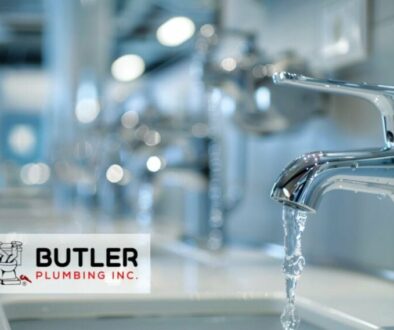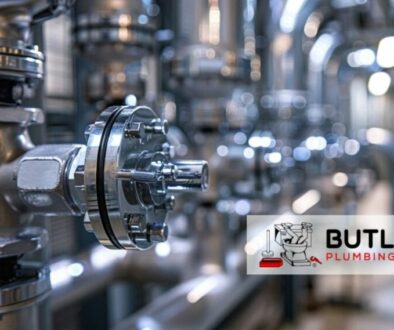8 Reasons Why Museums Need Commercial Plumbing
A museum is a cultural institution that preserves, researches, exhibits, and educates the public about objects and artifacts of artistic, cultural, historical, or scientific significance.
Commercial plumbing refers to installing, maintaining, and repairing plumbing systems in commercial buildings such as museums, offices, and other public spaces.
An excellent commercial plumbing system is essential for museums to keep artifacts clean, suppress a fire, maintain clean bathrooms, operate a chilled HVAC system, keep drinking fountains, restaurants, and coffee shops working, and ensure the overall cleanliness of the museum.
This is crucial for museums to maintain a safe, clean, and comfortable environment for visitors and to preserve the integrity of the artifacts and exhibits.
Below are reasons why museums need commercial plumbing:
1. Conservation Labs Need Water To Keep Clean Artifacts
A conservation lab in a museum is a specialized facility where artifacts and artworks are preserved, restored, and studied to maintain their integrity and historical significance.
Conservation labs in museums need to have a commercial plumbing system because they provide access to clean water for installing emergency equipment and delicate cleaning processes and for preparing solutions for artifact restoration.
Additionally, eyewash stations and chemical showers, which function due to plumbing, are vital safety features in case of accidental exposure to hazardous chemicals during conservation procedures.
2. Exhibit Water Features Use Water as Part of the Design
Museum exhibit water features are installations that use water as part of their design to create interactive and engaging exhibits. These features can include fountains, waterfalls, and other water-based displays that enhance the overall aesthetic and functionality of the museum.
For exhibit water features to work efficiently and safely, a museum needs the necessary water supply, drainage, and filtration provided by adequate plumbing.
3. Fire Suppression System Needs To Be Ready To Extinguish Fire
A fire suppression system is a specialized system designed to detect and extinguish fires quickly and efficiently. In museums, fire suppression systems are crucial for protecting the artifacts and exhibits from fire damage.
These systems work by detecting the presence of smoke or heat and triggering an alarm, which alerts the museum staff and activates the suppression system.
Commercial plumbing systems provide the necessary water supply to extinguish the fire immediately after detection.
4. Bathroom Need To Be Kept Clean and Tidy
Maintaining clean and tidy bathrooms is vital for museums to provide a comfortable and hygienic environment for visitors.
Commercial plumbing can incorporate features such as automatic faucets, touchless soap dispensers, and low-flow toilets, which can help conserve water and reduce the need for frequent cleaning.
It also ensures that the water used in restrooms is clean, free of contaminants, and healthy for visitors.
5. HVAC (Heating and Air Conditioning) Systems Need Water To Operate
An HVAC (Heating, Ventilation, and Air Conditioning) system is crucial for maintaining the proper temperature, humidity, and air quality in museums to preserve artifacts and provide a comfortable environment for visitors.
These systems help to regulate the temperature and humidity levels within the museum, creating an environment that is conducive to preserving the integrity of the artifacts and exhibits.
Water is a heat transfer medium in HVAC systems, so commercial plumbing is vital to their functionality.
6. Drinking Fountains Need Plumbing Pipes To Operate
Drinking fountains are essential amenities in museums that give visitors access to clean drinking water. These fountains are typically located near restrooms and other high-traffic areas, making them easily accessible to visitors.
Plumbing systems ensure that the water used in drinking fountains is clean, functional, safe, hygienic, and free of contaminants, which is essential for maintaining the health and safety of visitors.
7. Coffee Shops and Restaurants Need Water To Serve Drinks and Food
Coffee shops and restaurants heavily depend on water for beverage and food preparation, from brewing coffee to cooking and cleaning. It’s a crucial ingredient in various recipes, and its quality directly influences the taste and hygiene of the served items.
Additionally, water plays a role in ice production for cold beverages, highlighting its multifaceted importance in these establishments. Plumbing systems provide access to clean water needed for these processes.
8. Janitorial Rooms Need Water To Clean the Exhibition Rooms
Janitorial rooms in museums are essential spaces where cleaning supplies and equipment are stored and where janitorial staff can prepare for their cleaning duties.
These rooms require commercial plumbing access to water for cleaning and maintaining a healthy, bacteria-free environment in museums, which is essential for maintaining the health and safety of visitors and staff.
What is commercial plumbing?
Commercial plumbing refers to installing, maintaining, and repairing plumbing systems in commercial buildings such as museums, offices, and other public spaces. Plumbing systems provide the necessary water supply and drainage required for restrooms, drinking fountains, coffee shops, restaurants, and HVAC systems to function efficiently and safely.
What are common tools for commercial plumbing?
Some common tools for commercial plumbing include pipe wrenches, tubing cutters, pliers, press fitting systems, drills, and torches, among others. These tools help plumbers and maintenance staff to efficiently address issues related to water supply, drainage, and the maintenance of plumbing fixtures and systems within museums.
Is commercial plumbing maintenance needed?
Commercial plumbing maintenance is needed to ensure that plumbing systems in commercial buildings, including museums, are functioning efficiently and safely. Regular maintenance can prevent plumbing issues, saving money in the long run and ensuring the plumbing system stays in peak condition.
What are the most common plumbing systems used in museums?
In museums, the most common plumbing systems that serve vital functions to maintain a conducive environment are potable, drainage, and climate control systems.
Potable water supply systems cater to restrooms and drinking fountains, ensuring visitor convenience.
Drainage systems manage wastewater from sinks and facilities, promoting sanitation.
Climate control systems integrate specialized plumbing, regulating humidity and temperature to safeguard delicate artifacts from deterioration.
These systems collectively contribute to the preservation of exhibits and enhance the overall museum experience for visitors.
Commercial plumbing systems are also needed for reliability and support in the operations and preservation efforts of museums.
How is a commercial installation done?
Commercial plumbing installation involves the following steps:
1. Site Assessment
Site assessment thoroughly evaluates the commercial space, examining layout, structural integrity, and existing infrastructure. A professional will assess electrical systems, available space, and potential obstacles to tailor the installation to the site’s specific needs and constraints.
2. Design Planning
After assessment, the findings will be translated into a detailed design plan. There will be specifics for equipment type and placement, calculation of electrical loads, and other unique requirements.
The design needs to adhere
to industry standards and local building codes for a safe and efficient installation.
3. Permitting and Approvals
Obtain necessary permits and approvals by submitting detailed design plans to relevant authorities, as failure to secure proper licenses can lead to legal and safety issues. Engaging with inspectors will ensure compliance with local codes and regulations.
4. Material and Equipment Procurement
The project procurement team will carefully select and purchase materials and equipment based on design specifications. Factors such as quality, compatibility, and energy efficiency are vital considerations. Effective procurement ensures the installation is equipped with reliable components.
5. Pre-Installation Preparation
This involves preparing the site before installation by clearing obstacles, implementing safety measures, and setting up a designated work area. Coordination with other contractors helps minimize disruptions and ensure a smooth workflow if multiple installations occur.
6. Installation Execution
Here, the physical installation and connection of specified equipment according to the design plan occurs. Tasks during installation execution include running wiring, mounting devices, and integrating different system components. Attention to detail is crucial to ensure accuracy and functionality.
7. Quality Assurance and Testing
The quality assurance team will rigorously test installed systems to verify they operate according to design specifications.
Functional tests, safety checks, and inspections are conducted to identify and rectify any issues. Quality assurance is vital for a reliable and effective installation.
8. Documentation
The project team will create detailed documentation as a reference for future maintenance and modifications. This includes “as-built” drawings reflecting the installation, equipment specifications, and essential information for understanding and maintaining the system.
9. Training and Handover
The professionals will conduct comprehensive training for end-users or maintenance personnel on the operation and maintenance of installed systems.
It ensures that those responsible for the system have the knowledge needed for optimal performance. A smooth handover also enhances client satisfaction.
10. Post-Installation Support
A framework for ongoing support and maintenance is put in place. Any client-reported issues are promptly addressed, and regular maintenance checks are scheduled to prevent potential problems. Adequate post-installation support enhances the longevity and reliability of the commercial installation.
What are plumbing codes?
Plumbing codes are sets of regulations that establish standards for the design, installation, and maintenance of plumbing systems in buildings. These codes are created to ensure the safety and efficiency of plumbing systems, covering aspects such as water supply, drainage, and venting. Compliance with plumbing codes is typically required by local authorities to safeguard public health and the environment.
What are the plumbing codes adopted in Oklahoma state?
In Oklahoma, the plumbing codes adopted for commercial buildings, including museums, are the International Plumbing Code (IPC) 2015 Edition. These codes are adopted and amended at the state level by the Oklahoma Uniform Building Code Commission (OUBCC).
The IPC provides requirements for water supply and distribution systems, drainage, waste, venting, and soil piping systems, materials, installation, testing and inspection, and operational requirements for plumbing systems.
Compliance with these codes is crucial for museums to maintain a safe, clean, and comfortable environment for visitors and to preserve the integrity of the artifacts and exhibits.





